Do you have a question about the Toyota 1999 Corolla and is the answer not in the manual?
Guidelines for initial driving to ensure vehicle's future economy and long life.
Information on fuel type, octane rating, and recommendations for optimal vehicle performance.
Advice on ensuring correct fuel availability and complying with local vehicle laws when driving abroad.
Explanation of the catalytic converter's purpose and safety precautions related to exhaust gas.
Warnings about the dangers of inhaling engine exhaust and precautions for safe operation.
Explanation of normal engine oil consumption, factors affecting it, and how to interpret oil levels.
Information regarding the specific type of spark plugs installed in the engine for optimal performance.
Details on the vehicle's braking system, including component functions and safety features.
Explanation of the ABS function, its operation, and what the warning light indicates.
Details on the ABS warning light, its behavior during startup, and indications of malfunction.
Information on how brake pad wear indicators function and the importance of timely replacement.
Guidelines for safely stowing luggage and cargo to maintain vehicle balance and prevent injury.
Explanation of the VIN's purpose and its location on the vehicle for identification and registration.
Information about theft prevention labels designed to deter vehicle theft and aid in recovery.
Warnings against modifying the suspension/chassis, which can lead to dangerous handling characteristics.
Description of different tire types and their performance characteristics and limitations.
A checklist of essential steps to perform before entering and starting the vehicle.
Step-by-step instructions for the correct procedure to start the engine, including transmission considerations.
Guidance on adapting driving techniques for different conditions like gusty winds, curbs, and hills.
Recommendations for preparing and driving your vehicle in cold weather conditions, including coolant and battery checks.
Information and precautions related to towing a trailer, including weight limits and handling.
Tips on fuel efficiency and vehicle longevity through proper maintenance and driving habits.
Detailed information on adjusting seats, seat belts, steering wheel, and mirrors for safe and comfortable operation.
A comprehensive overview of the vehicle's dashboard layout, including all major instruments and control locations.
Information on using vehicle keys, operating door locks, trunk, hood, and security systems.
Instructions on operating headlights, turn signals, wipers, washers, and defogger systems for visibility.
Explanation of instrument panel gauges, meters, and service reminder indicators for monitoring vehicle status.
Guidance on using the ignition switch, operating the transmission, and engaging the parking brake for safe driving.
Information on operating the car audio system and the air conditioning controls for driver comfort.
An introduction to do-it-yourself maintenance, covering engine compartment overview, fuse locations, and necessary tools.
Detailed instructions for performing maintenance tasks on the engine and chassis, including fluid checks and tire care.
Guidance on checking and maintaining electrical components, including battery condition and fuse replacement.
Guidelines for initial driving to ensure vehicle's future economy and long life.
Information on fuel type, octane rating, and recommendations for optimal vehicle performance.
Advice on ensuring correct fuel availability and complying with local vehicle laws when driving abroad.
Explanation of the catalytic converter's purpose and safety precautions related to exhaust gas.
Warnings about the dangers of inhaling engine exhaust and precautions for safe operation.
Explanation of normal engine oil consumption, factors affecting it, and how to interpret oil levels.
Information regarding the specific type of spark plugs installed in the engine for optimal performance.
Details on the vehicle's braking system, including component functions and safety features.
Explanation of the ABS function, its operation, and what the warning light indicates.
Details on the ABS warning light, its behavior during startup, and indications of malfunction.
Information on how brake pad wear indicators function and the importance of timely replacement.
Guidelines for safely stowing luggage and cargo to maintain vehicle balance and prevent injury.
Explanation of the VIN's purpose and its location on the vehicle for identification and registration.
Information about theft prevention labels designed to deter vehicle theft and aid in recovery.
Warnings against modifying the suspension/chassis, which can lead to dangerous handling characteristics.
Description of different tire types and their performance characteristics and limitations.
A checklist of essential steps to perform before entering and starting the vehicle.
Step-by-step instructions for the correct procedure to start the engine, including transmission considerations.
Guidance on adapting driving techniques for different conditions like gusty winds, curbs, and hills.
Recommendations for preparing and driving your vehicle in cold weather conditions, including coolant and battery checks.
Information and precautions related to towing a trailer, including weight limits and handling.
Tips on fuel efficiency and vehicle longevity through proper maintenance and driving habits.
Detailed information on adjusting seats, seat belts, steering wheel, and mirrors for safe and comfortable operation.
A comprehensive overview of the vehicle's dashboard layout, including all major instruments and control locations.
Information on using vehicle keys, operating door locks, trunk, hood, and security systems.
Instructions on operating headlights, turn signals, wipers, washers, and defogger systems for visibility.
Explanation of instrument panel gauges, meters, and service reminder indicators for monitoring vehicle status.
Guidance on using the ignition switch, operating the transmission, and engaging the parking brake for safe driving.
Information on operating the car audio system and the air conditioning controls for driver comfort.
An introduction to do-it-yourself maintenance, covering engine compartment overview, fuse locations, and necessary tools.
Detailed instructions for performing maintenance tasks on the engine and chassis, including fluid checks and tire care.
Guidance on checking and maintaining electrical components, including battery condition and fuse replacement.
| Brand | Toyota |
|---|---|
| Model | 1999 Corolla |
| Category | Automobile |
| Language | English |
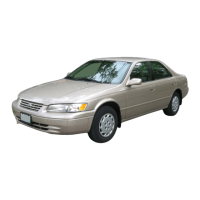
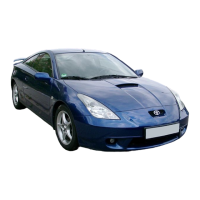
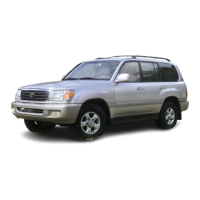
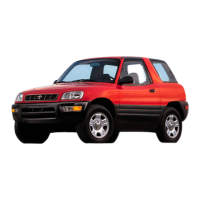
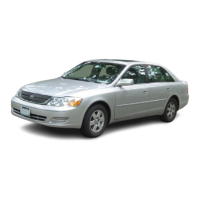
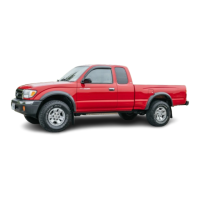



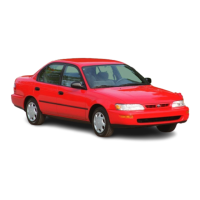
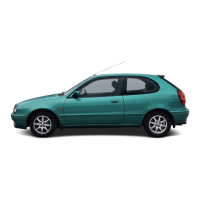
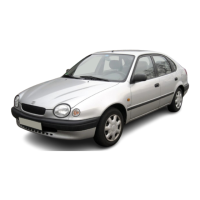
